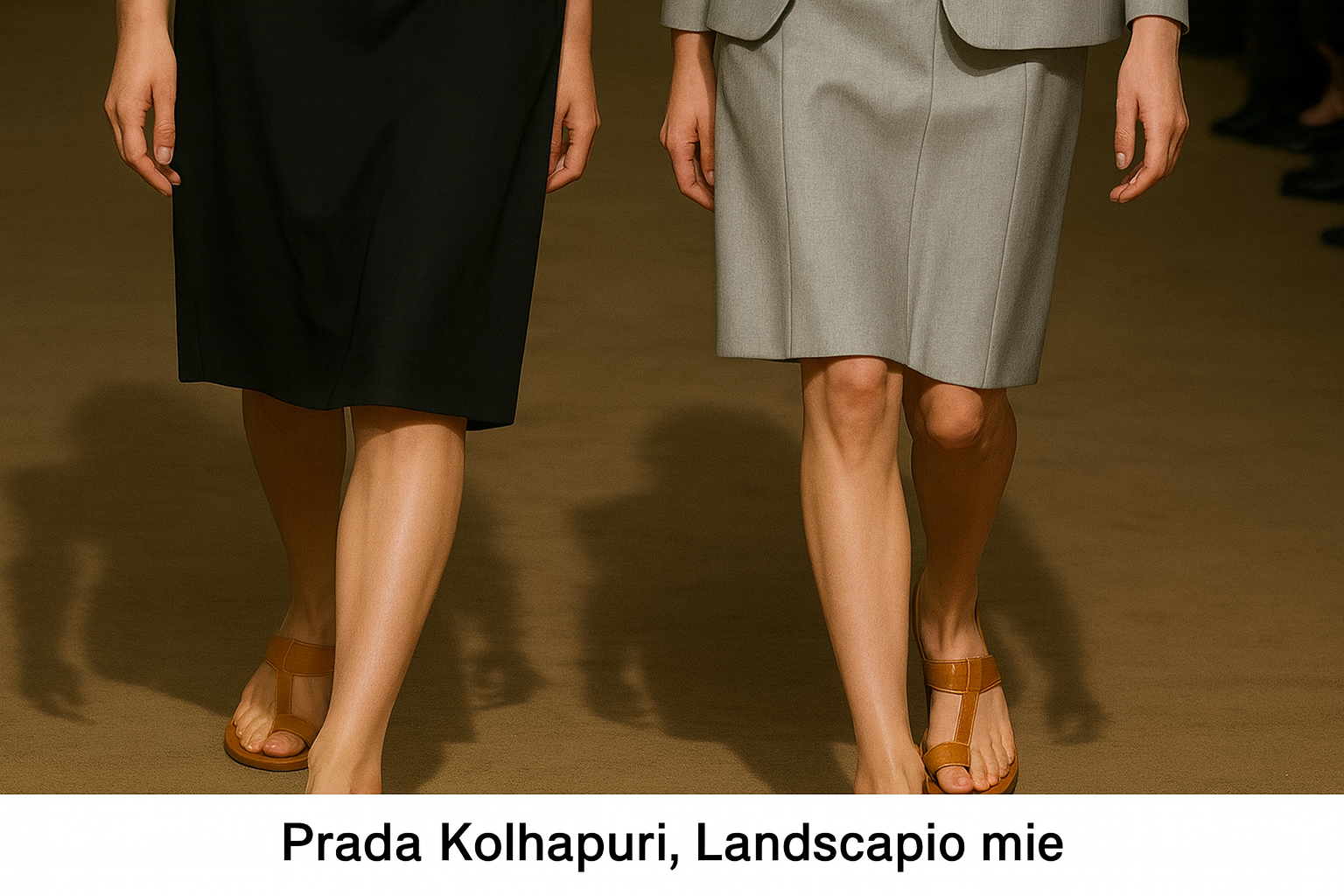In a rare pivot toward humility and cultural integrity, Prada has surprised the luxury world. Following design controversy, the Italian powerhouse has dispatched a delegation to Kolhapur, India, home to master artisans of traditional Kolhapuri chappals (leather sandals). Their mission? A “Made in India” collaboration that could redefine luxury responsibility, craft authenticity, and global brand repositioning.
A Scandal with a Silver Lining
Earlier this summer, Prada faced backlash when eagle-eyed craftsmen and design critics noticed unsettling similarities between its newest sandal design and the iconic Kolhapuri chappals—handmade for centuries in Maharashtra. The incident would have been a PR disaster if addressed poorly. Instead, Prada has taken the unexpected and honourable path forward: acknowledging the source and committing to authentic collaboration.
A team that includes supply-chain strategists and design leaders traveled to Kolhapur to meet artisan families. The aim is two-fold: respectful co-creation of new products rooted in handcrafted tradition, and guaranteeing economic uplift for the community responsible for that heritage.
Craft in the Age of Conscious Luxury
Luxury is undergoing a transformation in 2025. It’s no longer enough to layer on logos or push product out the door. Today’s affluent consumer demands transparency, ethical sourcing, and meaningful narratives. Prada’s move taps into this shift—not as virtue signalling, but as strategic repositioning.
By building a bridge between Milanese design teams and Kolhapur workshops, Prada seeks to elevate its brand story. The resulting line promises tactile authenticity—hand-tooled leather, regional techniques, artisanal finishes—yet engineered to luxury standards.
Europe’s Role in Collaborative Excellence
Britain, France, Italy—and by extension, the EU—are still the heart of luxury. But there’s growing realization: European design houses can no longer flourish in isolation. What truly matters now is cross-cultural exchange, traceable craftsmanship, and honest storytelling.
Prada’s initiative echoes recent UK-led programs like Walpole’s “Brands of Tomorrow” which champion quality craftsmanship and sustainability. It also mirrors how British designers are partnering with artisans globally to reinforce brand depth and relevance.
A Win-Win for Brand and Community?
Prada claims the collaboration will highlight artisan skill and heritage, not merely replicate it. Local leatherworkers gain recognition and economic opportunity; Prada gains brand credibility and innovation credentials.
If executed well, this will be no surface-level tie-up. Expect authentic inclusion—artisan names, regional motifs, transparent supply lines, fair wages. The result could be a collection of luxury chappals that sit on par with Prada’s runway-ready footwear—but rooted deeper in shared culture.
But It’s Not Without Risk
Luxury audiences can smell insincerity. If Prada fails to meaningfully elevate artisans—by limiting them to token design credits or skimping on royalties—critics will pounce. Worse, inauthentic execution could echo backlash, damaging brand prestige.
Also, scaling handcrafted production while preserving quality is complex. Luxury consumers expect exclusivity, not artisanal mass production. Balancing demand with principled output is precisely the tightrope Prada must walk.
A Test Case for Modern Luxury
Prada’s Kolhapur move isn’t just a reactionary fix—it’s a testbed for future luxury practices. It asks: Can a top-tier fashion house truly integrate authentic craft from afar? And will modern consumers reward genuine collaboration over copied aesthetics?
For Europe, this is a signal: luxury that ignores heritage and transparency is no longer tenable. Consumers now expect ethical stories woven into every stitch.
Conclusion: Reinvention Through Respect
When the Prada delegation touched down in Kolhapur this July, it signaled more than damage control—it suggested reinvention. If Prada follows through, the resulting sandal line could become a case study in respectful luxury: global design meeting local tradition, benefit shared, story authentic.
This summer’s Prada episode shows that even the most established brands must learn to listen, learn, and link — not just launch. As luxury evolves past logos and scarcity, this could be one of the most powerful collaborations of 2025—and a blueprint for brands that aspire to real cultural resonance.






